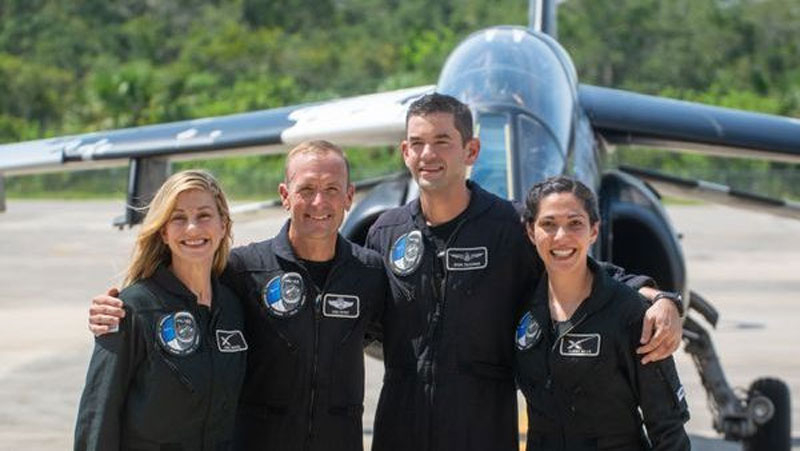SpaceX reported that the launch of the Polaris Dawn mission on the SpaceX Crew Dragon ship has been delayed by at least a day. Instead of sending four tourists on Monday, August 26, the launch will take place no earlier than August 27. This will give the team additional time to check the crew’s readiness for the historic journey, which will include the first time a tourist will go into outer space.

The mission of Polaris Dawn as imagined by an artist. Image source: SpaceX
The launch window will open on August 27 at 03:38 local time (10:38 Moscow time). A SpaceX Falcon 9 rocket carrying a modified Crew Dragon vehicle will lift off from Launch Complex 39A at NASA Space Center. Kennedy in Florida. The flight will last five days and will not include docking with the ISS. All this time, tourists will be locked in a small space of the ship. The purpose of the mission will be the first private human spacewalk. To do this, SpaceX has modernized flight suits and the ship itself, which was not originally intended for extravehicular activities.

There is no airlock on the Dragon, so when the capsule hatch is opened, all the secret nooks and crannies of the ship will be open to space. This forced engineers to provide additional protection for equipment from electronics to life support systems. It will be extremely unpleasant if, for example, a rupture occurs in the toilet pipes. The company also replaced the electric motor of the spacecraft’s hatch and provided brackets and grips on the capsule body for the movement of tourists during spacewalks.
Two hours were allotted for the two crew members of the Polaris Dawn mission to go into space from the start of the hatch opening to its closing. To prevent people from contracting decompression sickness, the system will start the process of removing nitrogen from the blood even before opening the hatch, which is achieved by gradually reducing the pressure in the cabin and increasing it in the spacesuits. This will also switch the team’s breathing system to pure oxygen.

The ship’s crew included Jared Isaacman, pilot Scott “Kidd” Poteet, a retired US Air Force lieutenant colonel, and mission specialists Sarah Gillis and Anna Menon, both SpaceX engineers. Isaacman is funding the mission. He has two more Polaris missions in his plans, but they have not yet been clearly defined.
After launch, the ship will rise into an elliptical orbit with a maximum altitude of 1,400 km, where the crew will conduct a series of experiments. It will also allow the two women in the crew to become the first astronauts to rise above regular crews to operate in Earth orbit. Further and higher is only a flight to the Moon. Then the ship will lower its altitude and two crew members will exit into open space. This will be followed by splashdown off the coast of Florida.